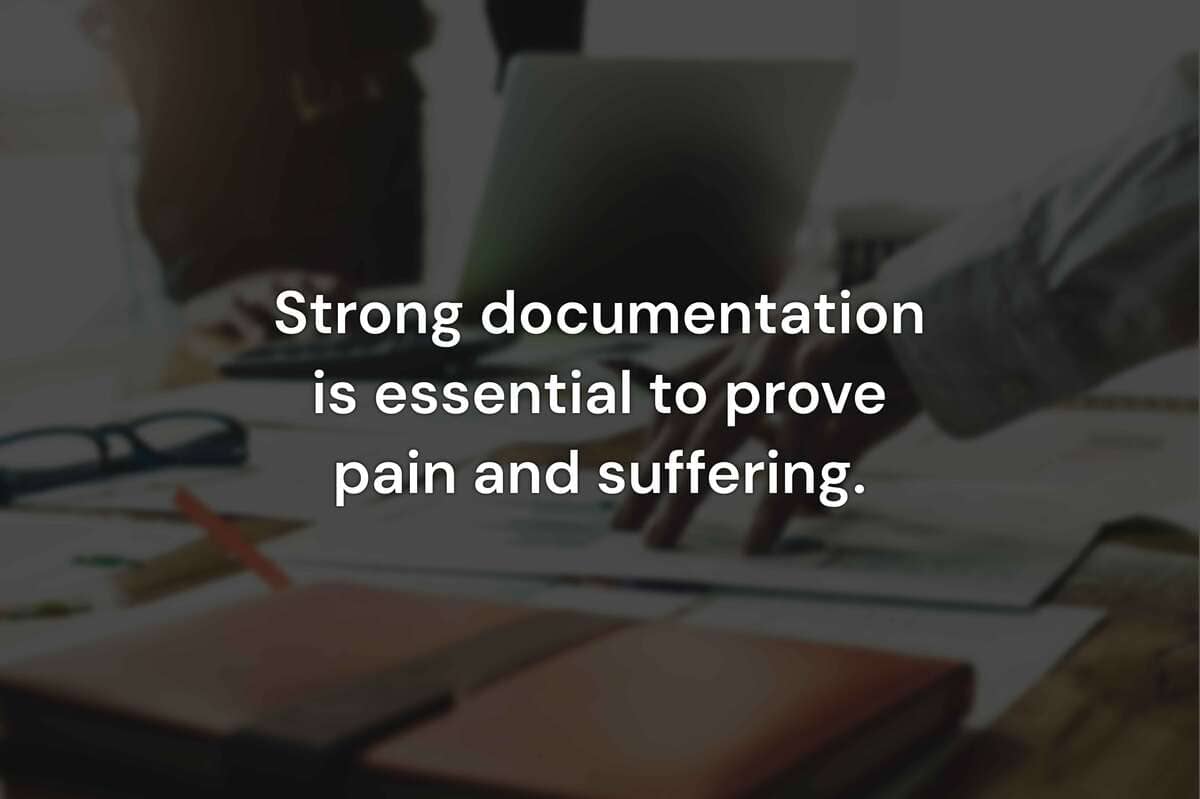To successfully negotiate a pain and suffering claim with an insurance company, you need to present strong documentation, use consistent language, and understand how insurers evaluate non-economic damages. Pain and suffering compensation refers to the physical pain, emotional distress, and overall disruption caused by your injuries—separate from medical bills or lost wages. Because there’s no exact formula, it’s critical to approach negotiations with a clear strategy and evidence to back your claim.
Understand What Qualifies as Pain and Suffering
Pain and suffering includes both physical discomfort and emotional impact tied to your injuries. Examples include:
- Chronic pain, soreness, or reduced mobility
- Depression, anxiety, or PTSD
- Sleep disturbances
- Loss of enjoyment of daily activities
- Social withdrawal or relationship strain
- Scarring or disfigurement
You don’t need to suffer a catastrophic injury to be eligible. Even moderate injuries can cause meaningful distress that warrants compensation.
Prepare Your Documentation
Insurance adjusters won’t just take your word for it—you’ll need to support your claim with clear, consistent documentation. Useful items include:
- Medical records describing the nature and duration of your pain
- Therapist or psychologist notes if mental health was affected
- A personal journal describing daily challenges and symptoms
- Photos of visible injuries over time
- Testimony from family, friends, or coworkers about how your life has changed
The more evidence you provide, the harder it becomes for the insurer to downplay your pain and suffering.

Know How Insurers Calculate Pain and Suffering
There are two common methods insurance companies use to estimate pain and suffering:
- Multiplier Method: They add up your economic damages (like medical bills and lost wages) and multiply that total by a number—usually between 1.5 and 5. The more severe the injuries, the higher the multiplier.
- Per Diem Method: A daily rate is assigned to your suffering, and that rate is multiplied by the number of days you were affected.
Example: If your medical bills were $20,000 and your recovery lasted 6 months, a 3x multiplier might lead to a $60,000 pain and suffering component on top of your economic damages.

Use Strong Language in Your Demand Letter
Your demand letter should clearly describe how the injury affected your life. Focus on specifics, such as:
- “Since the accident, I’ve experienced sharp lower back pain every morning that prevents me from getting out of bed without assistance.”
- “I can no longer lift my children or participate in weekend activities I once enjoyed.”
- “I’ve been unable to sleep through the night due to constant pain and anxiety.”
Avoid vague statements like “the accident was stressful” or “I was hurt.” Instead, provide details and emotional context to make your claim more compelling.
Be Patient but Firm
Insurance companies often start with a lowball offer. This is normal. Don’t accept the first offer unless it fully reflects your damages—including your pain and suffering. Instead:
- Politely reject offers that don’t match your evidence
- Request a breakdown of how they calculated the amount
- Highlight overlooked details and resubmit documentation
- Don’t sign anything until you’re satisfied or have legal guidance
If the adjuster continues to make low offers, consider involving a personal injury lawyer to take over negotiations or escalate the claim to a lawsuit.

We’ve also covered how long personal injury lawsuits take—important context if your claim becomes formal litigation.
If you're looking for concrete numbers, check out our article on average car accident settlements and how pain and suffering fits into those totals.
And if your injuries occurred on someone else’s property, our breakdown of average slip and fall settlement amounts explains how emotional distress plays a role in those claims, too.

















































.avif)






















